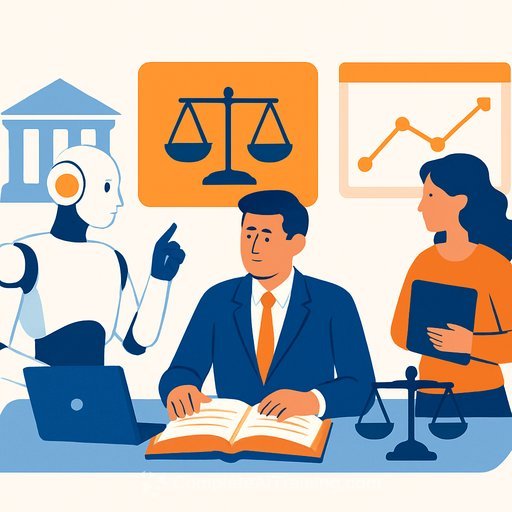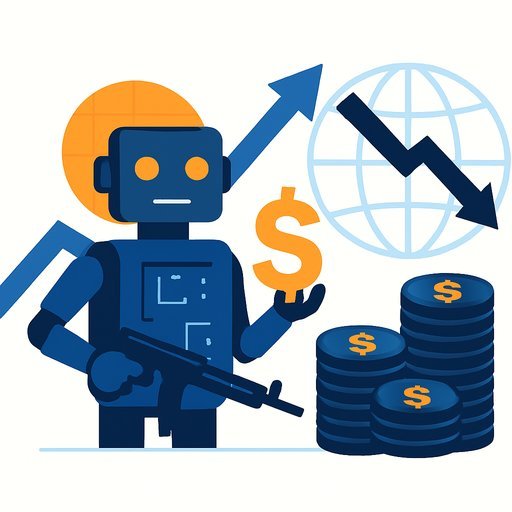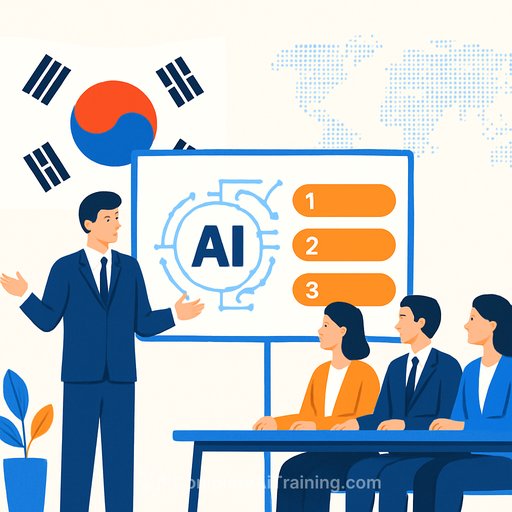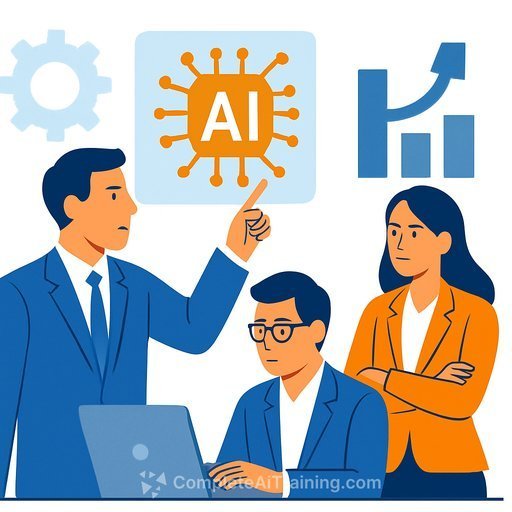AI Will Upgrade Junior Lawyers - If Leaders Train For It
Winston Weinberg, CEO of Harvey, is clear on where legal work is going: junior lawyers won't be replaced; they'll move up the value chain sooner. Harvey's platform handles document analysis and contract drafting so associates can spend more time on strategy, client context, and judgment.
The business case is credible. Harvey is valued at $5 billion after a $300 million round, serves 300+ clients, and works with seven of the top 10 U.S. firms by revenue. Reported revenue momentum and global expansion plans show buyer demand, not just hype.
Weinberg calls out a deeper problem-law's "broken apprentice system." His stance: AI is a lever to rebuild training, not cut it. Firms that invest in junior development alongside AI will compound capability; firms that don't will stall.
Why this matters for executives
Your operating model will change before your org chart does. Workflows, training, pricing, and client expectations are shifting at the same time. The winners will pair AI deployment with an explicit talent strategy for juniors.
Ignore training and you get faster first drafts with slower final outcomes. Invest in it and you create more capable teams, better retention, and stronger client relationships.
What changes for junior lawyers
- Less grunt work, more analysis: first-pass reviews, clause extraction, and comparisons move to AI-augmented workflows.
- Earlier exposure to strategy: juniors join at the "why" stage, not just the "how."
- Faster feedback cycles: outputs are reviewable artifacts that speed coaching and iteration.
Operating model shifts to plan for
- Work allocation: route matters by task type, not only by seniority; pair juniors with AI plus a reviewing partner.
- Pricing: move from time-only to outcome-centered fee structures where AI's speed is an asset, not a margin risk.
- Knowledge systems: capture prompts, checklists, playbooks, and model feedback as reusable firm IP.
- Data governance: define what data models can see, log every interaction, and lock down confidentiality.
Implementation playbook (12-24 weeks)
- Pick high-volume use cases: NDAs, vendor contracts, diligence summaries, issue spotting memos.
- Vendor fit and security: evaluate model capability for legal reasoning, integration options, audit logs, privilege safeguards, and data residency.
- Pilot with guardrails: 2-3 practices, 10-15 matters each; require partner sign-off before client delivery.
- Training tracks: juniors (prompting, review discipline), seniors (AI-first review, risk controls), support staff (workflow orchestration).
- Measure and iterate: cycle time, review hours per matter, error rates caught in review, client satisfaction, junior retention.
- Scale through a center of excellence: pattern libraries, approved prompts, model evaluation, and change management.
Risk, controls, and client trust
- Accuracy: human-in-the-loop reviews; require source citations and rationale for key outputs.
- Confidentiality: no client data in open systems; use private deployments, clear data deletion policies, and access controls.
- Privilege and compliance: document AI usage in matter files; maintain audit logs; align with jurisdictional guidance.
- Bias and drift: periodic red-teaming and calibration; monitor model updates like you would major software changes.
Signals that Harvey's model is gaining adoption
Specialized legal models, not generic chatbots, are central to Harvey's pitch. Weinberg stresses domain expertise and integrations with firm data, not just algorithms.
Partnerships and media coverage support that direction. See the Financial Times profile and reporting on contract lifecycle integrations covered by Artificial Lawyer.
Action checklist for law firm leaders
- Set a training mandate: juniors get structured AI use, review standards, and feedback loops from day one.
- Redesign engagement templates: define which sections AI drafts, which humans review, and what gets auto-cited.
- Rework KPIs: reward reduced rework, faster issue spotting, and documented knowledge reuse-not just hours.
- Client communication: add an AI usage note to proposals; explain benefits, controls, and review procedures.
- Career pathing: make "AI-augmented strategist" a defined competency with badges or internal certifications.
Competitive outlook
Harvey's scale and valuation have attracted rivals and fast followers. That's good for buyers-more choice, faster iteration, and pressure on vendor quality.
The strategic risk isn't picking the "perfect" tool. It's delaying training and change management while your peers compound learning with every matter.
Bottom line
AI won't sideline juniors. It will expose them to higher-order work sooner and fix weak parts of apprenticeship-if leaders fund training, set guardrails, and rewrite workflows.
Invest in people and the systems they use. That's how you convert tools into durable advantage.
Want a structured way to upskill your teams? Explore executive-focused AI learning paths at Complete AI Training.
Your membership also unlocks:






